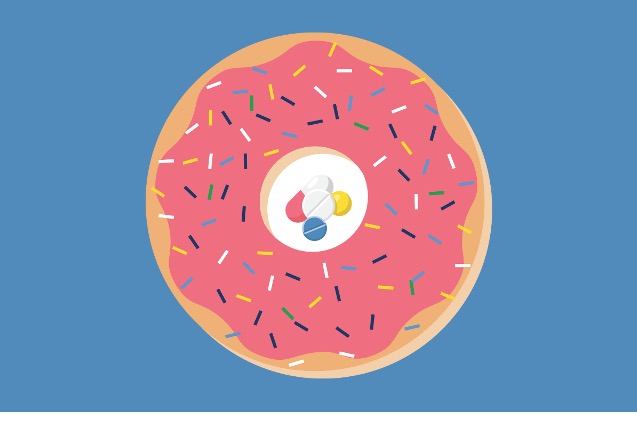CommentsWELLNESS - Medicare recipients often have questions about the Medicare Donut Hole.
The Medicare Donut Hole is a place where people with Medicare who are on certain prescription drugs face higher costs when they reach a certain point in their medication purchase cycle.
Understanding the difference between Medicare Part D and the Affordable Care Act (ACA) can help many individuals understand how to avoid being faced with these high medication costs. You can learn more about Medicare Part D here.
To understand how the Medicare Donut Hole works, you need to know the difference between Medicare Part D and the Affordable Care Act (ACA). Medicare Part D insurance comes from private insurance companies and is optional. The Affordable Care Act, a federal healthcare law, passed in 2010, has expanded coverage to millions of Americans. It includes an individual mandate requiring everyone to have health insurance or pay the penalty. The ACA also provides options for low-cost or free preventative care and screenings and limited subsidies for many people who have to purchase health insurance on their own due to their employers not providing it. The ACA has also expanded Medicare coverage for specific preventive services.
When people first enroll in Medicare Part D and begin paying for their own prescription drugs, they are often given a “Coverage Gap” discount card from the drug manufacturers. The person is expected to pay the discounted price out-of-pocket until they have paid a certain amount of money towards their medication. Each medication has a “donut” associated with it, and the person will pay between 33% -50% at the most of what their total cost or donut would be until they reach an amount close to $3,310. After they reach that level, they will receive 75% off the price of all of their covered drugs until the end of that year. Think of the donut hole as a pie. If you are in the coverage gap, you pay toward your donut until you reach the limit of $3,310 in one year. At that point, your prescription drug coverage is still not done paying for your medication, but it does pay 75% of the price. As long as you have not spent more than $3,600 or so on your medications during a year (the difference between $3,310 and $3,600 is designed to avoid the need for repeat cards from pharmaceutical companies), you will pay less than 25%, on average. If you are on a plan where the insurance company pays 100% of the price of your covered drugs, this means that your prescription costs will be much lower than if you weren’t in the coverage gap.
Here is how to avoid the coverage gap.
Purchase generic medications
If your doctor prescribes a name-brand drug and it is not on your plan’s formulary list, ask them if there is a generic available. They can write a prescription for the generic name, and you will then be able to get it at a lower price. Or, you can ask your doctor about getting a 90-day prescription for the brand name drug that is cheaper than the 30 and 60-day prescriptions.
Request discounts from the drug manufacturers.
The government has negotiated discounts with drug companies, but these discounts are often hidden. You can call the drug manufacturer and ask them to give you a better price or ask your doctor or pharmacist if they will assist you in getting these better prices. The discount cards will help you get the right price but are most useful to those who have reached the donut hole limits.
Submit your claims
The insurance companies pay higher prices to the pharmacies than what they pay for medications directly from the manufacturers. It is important to submit your claims so that pharmacy benefit managers do not mark up your costs unnecessarily. Calling them about rejection is essential, as well as asking for an override when necessary.
Place an advance mail order for your prescription drugs.
The mail-order pharmacy is usually the most expensive option. If your insurance company has a mail system, use it. If you prefer to get the prescription at a store, ask your doctor for a 90-day prescription instead of a 30-day or 60-day prescription and ask him or her if there is any way to get free samples of the drug you are taking.
Use other resources
Many reputable organizations provide free resources for people with Medicare who have problems paying for their medications. The National Low Income Health Assistance Program (NLIHAP) gives out information about low-cost options. The government also has tools available to help consumers make good choices for those having trouble finding a better price or low-cost substitute for their medication.
Get help from a community-based organization.
Many community-based organizations have information about available government and nonprofit aid for people with Medicare who can’t afford their medications. You can find out if there is an organization in your area that can help you.
Medicare donut hole is a problem that is unlikely to be solved without changes in policy. The current trend is one of rising drug costs, and the number of people with high medication costs will continue to rise.
Several issues contribute to the coverage gap in Medicare Part D. The main issue is prescription drug prices. Prescription drug prices have risen faster than the general inflation rate and slower than other healthcare costs. However, they still cause higher expenses for Medicare beneficiaries who have to pay for their own prescription drugs. Policymakers need to find a way to prevent or slow this increase in cost while still providing access to quality medications for all providers and beneficiaries. The current trend of using high-price medications with little benefit contributes to many of the costs for Medicare Part D.
###













